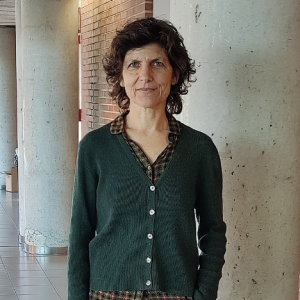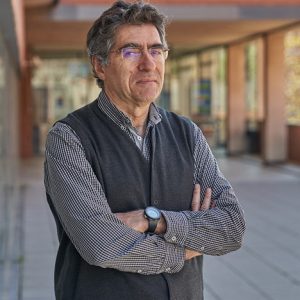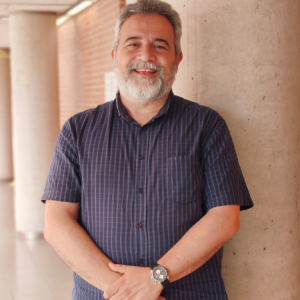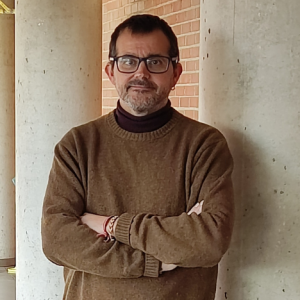Development and Regeneration Biology
Department of Genetics, Microbiology and Statistics
Faculty of Biology, UB
Emili Saló
ORCID ID: 0000-0001-5460-9223
Tel +34 934035977
Lab Planarian Barcelona
Josep Francesc Abril
ORCID ID: 0000-0001-7793-589X
Tel +34 934031305
Computational Genomics Lab
Teresa Adell
ORCID ID: 0000-0002-5446-1510
Lab Planarian Barcelona
Francesc Cebria
ORCID ID: 0000-0002-4028-3135
Tel +34 934021499
Lab Planarian Barcelona
Principal investigators: • Emili Saló • Josep Francesc Abril • Teresa Adell • Francesc Cebria
PhD students: • Eudald Pascual • Sergio Castillo Lara • Maria Roselló
Beatriu de Pinós-Marie Curie Sklodowska COFUND Postdoctoral fellow: • Mª Dolores Molina
Postdoctoral research assistant/Lab manager: • Susana Fraguas




Current
Research
Regeneration and tissue renewal are essential processes of adult animals that must be tightly controlled. During regeneration the proper amount of new cells must be produced, and their fate properly re-specified. During homeostatic cell renewal new cells are also continuously produced and must be integrated into an already developed body plan. In both situations, two main processes should be coordinated: growth (cell proliferation/death) and pattern (cell fate and organization). Planarian stricking plasticity provides the ideal scenario to understand the genetic and molecular interactions driving adult development. Planarians regenerate a complete and proportionate organism from any small piece. Furthermore, during homeostasis they undergo a tissue constant turnover, growing and shrinking depending on nutrients, always maintaining organ functionality. The basis of such behaviour is the presence of a population of adult pluripotent stem cells, the neoblasts, accompanied by the constitutive activation of cell communication pathways.
To advance in the understanding of the genetic and cellular mechanisms that underlie planarian regeneration and tissue renewal, our main objectives are: 1) to characterize the genetic and cellular interactions that confer organizing activity to posterior planarian tips. To that aim we integrate data obtained from several high throughput genomic technologies: RNAseq, ATAC-seq, Chip-seq and Drop-Seq; 2) to understand the required cell reprograming to remodelate the old structures to the new proportions and the regeneration of new missing structures with the correct size and shape. We study the Hippo pathway as a main player in the correct cell differentiation and maintenance of the differentiated state; 3) to unravel the epigenetic regulation of stem cell maintenance and differentiation from the functional characterization of the CBP/p300 family of histone acetyltransferases; and 4) to implement computational tools, protocols and models to assist in the analysis, integration and visualization of planarian omics datasets.

Selected
Publications
De Sousa, N.; Rodríguez-Esteban, G.;, Rojo-Laguna, J.I.; Saló, E.; Adell, T. Hippo signaling controls cell cycle and restricts cell plasticity in planarians. PLoS Biol. 16(1):e2002399, 2018. doi.org/10.1371/journal.pbio.2002399
Castillo-Lara, S.; Abril, J.F. PlanNET: homology-based predicted interactome for multiple planarian transcriptomes. Bioinformatics. 34(6):1016—1023, 2018. doi.org/10.1093/bioinformatics/btx738
Barberán S, Fraguas S & Cebrià F. The EGFR signalling pathway controls gut progenitor differentiation during planarian regeneration and homeòstasis. Development. 143:2089-20102, 2016. doi.org/10.1242/dev.131995
Almuedo-Castillo, M.; Crespo, X.; Seebeck, F.; Bartscherer, K.; Salò, E.; Adell, T. JNK controls the onset of mitosis of planarian stem cells and triggers apoptotic cell death required for regeneration and remodeling. PLOS Genetics. 10 (6):e1004400, 2014. doi.org/10.1371/journal.pgen.1004400
Molina, M.D.; Neto, A,; Maeso, I.; Gómez-Skarmeta, J. L.; Saló, E.; Cebrià, F. Noggins, a noggin-like gene and a BMP/ADMP organizer control the regeneration of the planarian DV axis. Current Biology. 21:300-305, 2011. doi.org/10.1016/j.cub.2011.01.016
Selected
Publications
Author
Identification
1- de Sousa N, Rodríguez-Esteban G, Rojo-Laguna JI, Saló E & Adell T. Hippo signaling controls cell cycle and restricts cell plasticity in planarians. PLoS Biol. 2018 Jan 22;16(1):e2002399. doi: 10.1371/journal.pbio.2002399.
[/su_spoiler] [su_spoiler title="" open="no" style="default" icon="plus" anchor="" class="selected-publications-toggle"]
Author
Identification
2- Castillo-Lara S & Abril JF. PlanNET: homology-based predicted interactome for multiple planarian transcriptomes. Bioinformatics, 34(6) :1016—1023, 2018. https://compgen.bio.ub.edu/PlanNET
[/su_spoiler] [su_spoiler title="" open="no" style="default" icon="plus" anchor="" class="selected-publications-toggle"]
Author
Identification
3- Barberán S, Fraguas S & Cebrià F. The EGFR signalling pathway controls gut progenitor differentiation during planarian regeneration and homeòstasis. Development 2016, 143:2089-20102, doi: 10.1242/dev.131995
[/su_spoiler] [su_spoiler title="" open="no" style="default" icon="plus" anchor="" class="selected-publications-toggle"]
Author
Identification
4- Almuedo-Castillo M, Crespo X, Seebeck F, Bartscherer K, Salò E & Adell T. JNK controls the onset of mitosis of planarian stem cells and triggers apoptotic cell death required for regeneration and remodeling. PLOS Genetics 2014, 10 (6):e1004400
[/su_spoiler] [su_spoiler title="" open="no" style="default" icon="plus" anchor="" class="selected-publications-toggle"]Author
Identification
5- Molina MD, Neto A, Maeso I, Gómez-Skarmeta JL, Saló E & Cebrià F. Noggins, a noggin-like gene and a BMP/ADMP organizer control the regeneration of the planarian DV axis. Current Biology, 2011, 21:300-305.
[/su_spoiler]


